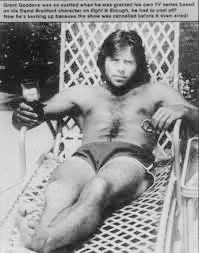The Last Bus, on Netflix, a British post-Apocalyptic horror series starring teenagers. I wonder if they can't stop the bus, or they'll succumb to the zombie virus.
Be careful: The Last Bus is also a movie about a man riding a bus because he has a dead wife, a movie about a bus trip that leads to disaster
Prologue: People in Hazmat suits carrying boxes labeled Monkhouse Dynamics. They contain soccer ball-sized devices. Whoops, one falls to the floor, pulsates, and flies away. It doesn't end with a bang or a whimper, but with a soccer ball.
Scene 1: The Braelawn Academy. Nerd Nas, whose gender is indeterminate but is played by the male-presenting Moosa Mostafa, and their Dad are waiting for a bus which will take them on a field trip to the Monkhouse Facility.
Meanwhile, two girls taking a driving class swerve to avoid a hedgehog. They wonder what it is doing out during the day: something must be wrong. The bus leaves in 8 minutes; they zoom to get there in time.
And Depressed Tom (Daniel Frogson, top photo) is being driven by his glittery, gossipy Mom to the Academy. When they arrive, she flirts with his friends Daniel (black) and Skely (young). They discuss how hot she is, which makes Tom angry.
Plus: flamboyant drama club kid Joshua (Nathanael Saleh), his bff, and a Genius Girl who interrogates Nerd Nas's Dad about his financial situation.
Scene 2: The smoking, doddering bus arrives. Everyone looks disappointed, but they get on anyway. The guy I thought was Nas's Dad is actually Mr. Short (Tom Basden), the chaperone.
They drive along the rocky coast, the kids frolicking, Genius Girl disapproving. A boy gets car sick. A boy and a girl smooch.
Nerd Nas gives us a plot dump: As you know, we are on our way to see billionaire scientist Dalton Monkhouse, who has invented the next generation of robots. Depressed Tom's friend Daniel ridicules then, whereupon Car Girl ridicules his ability to get a girlfriend. Hegemonic masculinity, good choice. And why isn't the adult intervening?
Scene 3: They get off the bus and switch to golf carts. Hey, I thought they were going to be on that bus through the Apocalypse. Some more traveling, and they arrive at a futuristic facility composed mostly of geodesic domes. The slimy, sinister Dalton Monkhouse greets them via hologram.
Daniel the Bully forces Depressed Tom to attack Nas. Their sister advises that they "tone it down a bit." Nas is called both "he" and "she" by various kids, so I'm guessing that they are transgender.
Scene 4: While the others enter the facility, Nerd Naz sneaks into an "employees only" entrance. Sister follows, and gets lost in a dark labyrinth. She overhears the Hazmat suits discussing how one of their glowing soccer balls got away.
Meanwhile, everyone is in a giant dining room, sipping on drinks and listening to Monkhouse the Messiah: "The world can be a dark place, but one man can bring the Light." Through his patented hologram technology, he has achieved omnipresence: he's talking to everyone in the world at the same time!
Monkhouse points out that all of the world's problems -- deforestation, extinct species, pollution, global warming -- are caused by people.
I thought that the glowing soccer balls were designed to kill all of humanity, but instead they seem to be brainwashing devices: "Just look into the light."
In the cave, Nas is being brainwashed by one, until Sister yells and scares it away.
"Believe me when I say," Monkhouse continues, "That I am sending you to a better place."
Suddenly the glowing soccer balls start evaporating people. I guess they were killing machines after all. Everyone panicks and runs and hides. The end.
Beefcake: None.
Gay Characters: The drama club kid, probably. I can't tell if Nas is supposed to be transgender or not.
Heterosexism: A little.
Will I Keep Watching: I'm interested in how they will survive the glowing orbs from inside the belly of the beast.
Update: I have watched every episode of The Last Bus. Spoiler alert:
1. The people haven't been killed: they've been put in stasis until Earth's carbon dioxide levels recede. It would have been nice to tell everyone that in the first place, instead of just zapping them.
2. Flamboyantly feminine Josh gets a girlfriend.
3. No other romantic relationships appear.
4. And no gay subtexts.















